
Journal of Ophthalmology
Scope & Guideline
Illuminating Innovations in Ophthalmology
Introduction
Aims and Scopes
- Clinical Ophthalmology:
Research related to the diagnosis, treatment, and management of various ocular conditions, including cataracts, glaucoma, age-related macular degeneration, and diabetic retinopathy. - Surgical Techniques:
Innovative surgical methods and outcomes in ocular procedures, particularly in cataract surgery, retinal surgery, and glaucoma management. - Ocular Pathophysiology:
Studies focusing on the underlying mechanisms and biological processes of eye diseases, including genetic, molecular, and inflammatory aspects. - Optical Imaging Technologies:
Advancements in imaging techniques such as optical coherence tomography (OCT) and their applications in diagnosing and monitoring ocular diseases. - Public Health and Epidemiology:
Research exploring the prevalence, risk factors, and socio-economic determinants of eye diseases and their impact on public health. - Innovative Therapies and Treatments:
Evaluation of new therapeutic approaches, including pharmacologic treatments, gene therapy, and minimally invasive techniques. - Patient-Reported Outcomes:
Research that assesses patient experiences and quality of life related to ophthalmic conditions and treatments.
Trending and Emerging
- Artificial Intelligence in Ophthalmology:
There is a significant increase in research applying artificial intelligence for diagnosing and managing ocular diseases, highlighting the potential for improved accuracy and efficiency in clinical practice. - Telemedicine and Remote Monitoring:
The rise of teleophthalmology, especially post-COVID-19, emphasizes the importance of remote patient monitoring and virtual consultations in maintaining eye health. - Genetic and Molecular Research:
An increasing focus on genetic studies and molecular mechanisms underlying eye diseases, which can lead to targeted therapies and personalized medicine. - Ocular Imaging Innovations:
Emerging imaging technologies, such as enhanced optical coherence tomography and multimodal imaging, are gaining traction for their ability to provide detailed insights into ocular health. - Myopia Management:
Research on interventions for myopia control, including innovative spectacle designs and pharmacological treatments, is becoming a prominent area of interest. - Social Determinants of Eye Health:
A growing body of work addressing the impact of socio-economic factors on ocular health outcomes, emphasizing the need for equitable access to eye care services.
Declining or Waning
- Traditional Pharmacotherapy:
There appears to be a waning interest in studies focused solely on traditional pharmacotherapy, as newer therapies and combination treatments gain prominence. - Invasive Surgical Procedures:
Research on highly invasive surgical techniques is becoming less frequent, with a shift toward less invasive, more patient-friendly approaches. - Aging Population Studies:
While still important, the volume of studies specifically targeting aging-related ocular conditions without broader implications or innovative treatment options has decreased. - Historical Epidemiological Studies:
The journal has seen fewer publications focused on retrospective epidemiological studies, as there is a growing emphasis on real-time data and prospective analyses. - Conventional Visual Acuity Testing:
There is a notable reduction in research centered on conventional visual acuity testing methods, as advancements in technology offer more comprehensive assessment tools.
Similar Journals
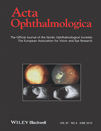
ACTA OPHTHALMOLOGICA
Leading the Charge in Vision ScienceACTA OPHTHALMOLOGICA, published by Wiley, is a premier academic journal dedicated to advancing the field of ophthalmology and related medical disciplines. Established in 1923 and maintaining esteemed status through converged years until 1994, and then from 2008 to the present, this journal has consistently delivered pioneering research, reviews, and clinical advancements essential for both practitioners and researchers in eye care. With an impressive impact factor and ranking within the top 15 of its category, ACTA OPHTHALMOLOGICA stands as a Q1 journal in both Medicine (Miscellaneous) and Ophthalmology, reflecting its significant contribution to the field. Although it is not an open-access journal, it continues to offer valuable insights and empirical findings that inform clinical practices and innovative research approaches. As such, it remains a vital resource for scholars, clinicians, and students keen to stay at the forefront of ophthalmological science.

EUROPEAN JOURNAL OF OPHTHALMOLOGY
Shaping the Future of Eye Care and ResearchThe EUROPEAN JOURNAL OF OPHTHALMOLOGY, published by SAGE PUBLICATIONS LTD, is a leading international journal in the field of ophthalmology, dedicated to advancing the understanding and treatment of ocular diseases and disorders. With an ISSN of 1120-6721 and an E-ISSN of 1724-6016, the journal aims to provide a platform for innovative research, critical reviews, and comprehensive studies that span the diverse aspects of the discipline. As part of its commitment to disseminating high-quality research, the journal is indexed in Scopus, achieving an impressive rank of #47 out of 137 in the Medicine - Ophthalmology category, indicating its strong impact within the academic community. With a current impact factor that places it in the Q2 quartile for both Medicine (miscellaneous) and Ophthalmology as of 2023, it offers researchers and practitioners access to important findings and developments in eye health. The journal's converged years from 1991 to 2024 exemplify its longstanding commitment to the field, making it an essential resource for anyone looking to stay at the forefront of ophthalmological research.
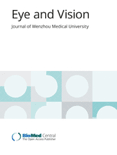
Eye and Vision
Exploring the depths of ocular research and clinical excellence.Eye and Vision, published by BMC, is a leading open-access journal dedicated to the dynamic field of ophthalmology and visual sciences. With its ISSN 2326-0246 and E-ISSN 2326-0254, the journal has established itself as a premier platform for innovative research and clinical studies, achieving impressive rankings in 2023 as Q1 in both Health Professions (Miscellaneous) and Ophthalmology categories. The journal's commitment to accessible knowledge since its transition to open access in 2015 enhances its global reach, allowing researchers, clinicians, and students to share and access top-tier studies and advancements in the field. Located in the United Kingdom and delivering influential insights from 2014 through to 2024, Eye and Vision holds significant relevance, with a Scopus ranking placing it in the 99th percentile for Health Professions and the 93rd percentile for Ophthalmology, making it an essential resource for those looking to stay at the forefront of eye research and vision science.

EYE
Pioneering Research for a Brighter Visual FutureEYE is a prestigious peer-reviewed journal published by SpringerNature that serves as a cornerstone in the fields of Ophthalmology, Arts and Humanities, and Neuroscience. Since its inception in 1987, this influential journal has consistently maintained a Q1 Quartile ranking across multiple categories, showcasing its commitment to advancing knowledge and research in its disciplines. With a notable impact factor and a robust Scopus ranking—19th in Ophthalmology and 8th in Sensory Systems—EYE is vital for researchers, clinicians, and students alike, providing a platform for groundbreaking studies and critical reviews. While the journal operates under a subscription model, it ensures broad access to high-quality research, facilitating the dissemination of knowledge that shapes the future of eye health and sensory systems. With an address at Campus, 4 Crinan St, London N1 9XW, England, EYE continues to be a leading light in the understanding and advancement of visual health and sensory sciences.
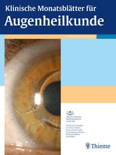
KLINISCHE MONATSBLATTER FUR AUGENHEILKUNDE
Transforming Vision Care through Scholarly Insight.Klinische Monatshefte für Augenheilkunde is a distinguished peer-reviewed journal published by Georg Thieme Verlag KG, dedicated to advancing knowledge in the field of ophthalmology and general medicine. With an ISSN of 0023-2165 and an E-ISSN of 1439-3999, this journal has been a reputable platform for researchers and clinicians since its inception in 1963, continuing its impactful contributions through to 2024. Recognized in the Q3 quartile for both Medicine (miscellaneous) and Ophthalmology, this journal serves as a vital resource for those involved in ocular health, offering insights into clinical practices, recent advancements, and essential research findings. Despite its traditional publishing model, the journal retains a significant role in the academic community, as evidenced by its current Scopus ranking of #90/137 in the field of Ophthalmology. It is an essential read for professionals and students aiming to stay at the forefront of ophthalmic research and clinical innovations.

Expert Review of Ophthalmology
Navigating the Evolving Landscape of OphthalmologyExpert Review of Ophthalmology is a leading academic journal published by ROUTLEDGE JOURNALS, TAYLOR & FRANCIS LTD, specializing in the rapidly evolving field of ophthalmology. With its ISSN 1746-9899 and E-ISSN 1746-9902, this journal has been at the forefront of disseminating critical research and insightful reviews since its inception in 2006. Covering a broad spectrum of topics within ophthalmology, it plays a pivotal role in advancing knowledge and practice, especially given its prestigious standings in various quartile rankings, including Q1 in Public Health and Q2 in Immunology and Allergy for 2023. The journal aims to provide professionals, researchers, and students with comprehensive perspectives on contemporary challenges and innovations in ophthalmology. Generously supported by a robust peer-review process, the journal ensures that all published works meet high academic standards, thereby serving as a vital resource for anyone looking to stay informed about the latest developments in eye care and vision science. By bridging research and clinical application, Expert Review of Ophthalmology is essential for those aiming to contribute meaningfully to this critical field.

BRITISH JOURNAL OF OPHTHALMOLOGY
Empowering Ocular Science: Where Innovation Meets InsightThe British Journal of Ophthalmology, published by the BMJ Publishing Group, stands as a leading peer-reviewed journal in the field of ocular sciences, with a distinctive focus on advancing the understanding of vision and its impairment. With a rich history dating back to 1941, this journal serves as an essential platform for researchers, professionals, and students in ophthalmology and related disciplines. It prominently ranks in the Q1 quartile for Ophthalmology and Cellular and Molecular Neuroscience in 2023, reflecting its esteemed reputation in the scientific community. The journal boasts impressive Scopus rankings, including Rank #6 in Medicine - Ophthalmology, showcasing its influential contributions to the field. Although it does not offer open access, the journal is committed to disseminating high-quality research that informs clinical practices and enriches the understanding of sensory systems. Submissions are encouraged from all areas of ophthalmology, including clinical studies, innovative research, and systemic reviews. Join the vibrant academic dialogue by engaging with the cutting-edge findings published in the British Journal of Ophthalmology, which aims to bridge the gap between research and clinical application.
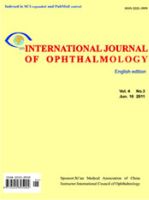
International Journal of Ophthalmology
Bridging Research and Practice in Eye HealthThe International Journal of Ophthalmology, with ISSN 2222-3959 and E-ISSN 2227-4898, is a premier open-access publication dedicated to advancing the field of ophthalmology. Published by IJO PRESS in China, this journal has been a valuable resource since its inception in 2005, providing a platform for groundbreaking research and clinical studies in ophthalmic science. With an impressive Q2 ranking in the 2023 Ophthalmology category and a Scopus rank of #65 out of 137, the journal consistently showcases high-quality articles that contribute significantly to the understanding and treatment of eye diseases. Since adopting an open-access model in 2010, it has expanded its reach, allowing researchers, professionals, and students worldwide to access vital knowledge in the field. The journal aims to bridge the gap between laboratory research and clinical practice, making it an essential resource for those committed to improving visual health and advancing ophthalmologic education and innovation.
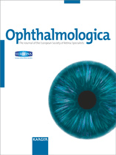
OPHTHALMOLOGICA
Exploring the Depths of Ocular Health and MedicineOPHTHALMOLOGICA is a prestigious journal published by KARGER, dedicated to the dynamic field of ophthalmology and its interdisciplinary connections with medicine and sensory systems. With a rich history spanning over a century since its inception in 1899, this journal is esteemed for its high-quality research and impactful contributions, maintaining an impressive Q1 quartile ranking in both ophthalmology and miscellaneous medicine as of 2023, alongside a notable Q2 status in sensory systems. The journal's influence is reinforced by its Scopus rankings, where it ranks 26th out of 137 in ophthalmology, showcasing a strong percentile position of 81. Based in Basel, Switzerland, OPHTHALMOLOGICA serves as an essential platform for researchers, professionals, and students, providing essential insights, reviews, and studies that push the boundaries of knowledge in the vision sciences. Although it does not currently offer open access, its contributions are critical for those pursuing advancements in ocular health and related disciplines.

Ophthalmologie
Transforming Knowledge into Visionary SolutionsOphthalmologie is a distinguished journal published by Springer Heidelberg, specializing in the broad and evolving field of ophthalmology. With an ISSN of 2731-720X and an E-ISSN of 2731-7218, the journal serves as a pivotal platform for disseminating cutting-edge research and clinical advancements in the realm of eye health. As of 2023, it ranks in the third quartile (Q3) within both the general medicine and ophthalmology categories, reflecting its substantial contribution to the academic community and the field's knowledge base. The journal aims to foster collaboration among researchers, medical professionals, and students by offering innovative findings that enhance understanding and treatment of ocular diseases. By nurturing high-quality scholarly discussions, Ophthalmologie plays an essential role in the ongoing development of therapeutic strategies and ophthalmic techniques that ultimately benefit patient care globally. This commitment to excellence is evident as it continues to evolve through its convergence from 1992 to 2023, staying relevant in an ever-changing scientific environment.